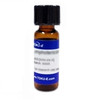Pyoluteorin is a small chlorinated pyrrol produced by several species of Pseudomonas, first reported in 1958. Pyoluteorin has a broad bioprofile, demonstrating antibiotic, antifungal and herbicidal activity. More recently, Pyoluteorin has been investigated as a bio-pesticide and has been shown to modulate the levels of metabolites in Pseudomonas.
Pyoluteorin is soluble in ethanol, methanol, DMF and DMSO. Limited water solubility.
| Molecular Formula | C11H7Cl2NO3 |
| Plant Biology Applications | Pyoluteorin autoregulation in the rhizosphere was assessed with cucumber seedlings in soil and cross-feeding experiments. Expression of a pyoluteorin biosynthesis gene by a pyoluteorin-deficient mutant of Pf-5 was enhanced by Pyoluteorin produced by coinoculated cells of Pf-5. Thus, Pyoluteorin is an autoregulatory compound and functions as a signal molecule influencing the spectrum of secondary metabolites produced by the bacterial cell. |
| Cancer Applications | The pharmacophore of Pyoluteorin derivatives are promising as Mcl-1 antagonists against Mcl-1-dependent hematological cancers. |
| References |
Brodhagen M, Henkels MD, Loper JE. Positive autoregulation and signaling properties of Pyoluteorin, an antibiotic produced by the biological control organism Pseudomonas fluorescens Pf-5. Appl Environ Microbiol. 2004 Mar;70(3):1758-1766 PMID 15006802 Chen JJ (2011) Slow-release formulation of a new biological pesticide, Pyoluteorin, with mesoporous silica. J. Agric. Food Chem. 59:307 Ding T, Yang LJ, Zhang WD, Shen YH (2020) Pyoluteorin induces cell cycle arrest and apoptosis in human triple-negative breast cancer cells MDA-MB-231. J Pharm Pharmacol. 72(7):969-978 PMID 32246778 Doi K et al (2014) Pyoluteorin derivatives induce Mcl-1 degradation and apoptosis in hematological cancer cells. Cancer Biol Ther. 15(12):1688-1699 PMID 25535900 Kidarsa T.A. et al (2011) Phloroglucinol mediates cross-talk between the pyoluteorin and 2,4-diacetylphloroglucinol biosynthetic pathways in Pseudomonas fluorescens Pf-5. Mol. Microbiol. 81:395 Takeda RJ (1958) Structure of a new antibiotic, Pyoluteorin. Am. Chem. Soc. 80:4749 |



